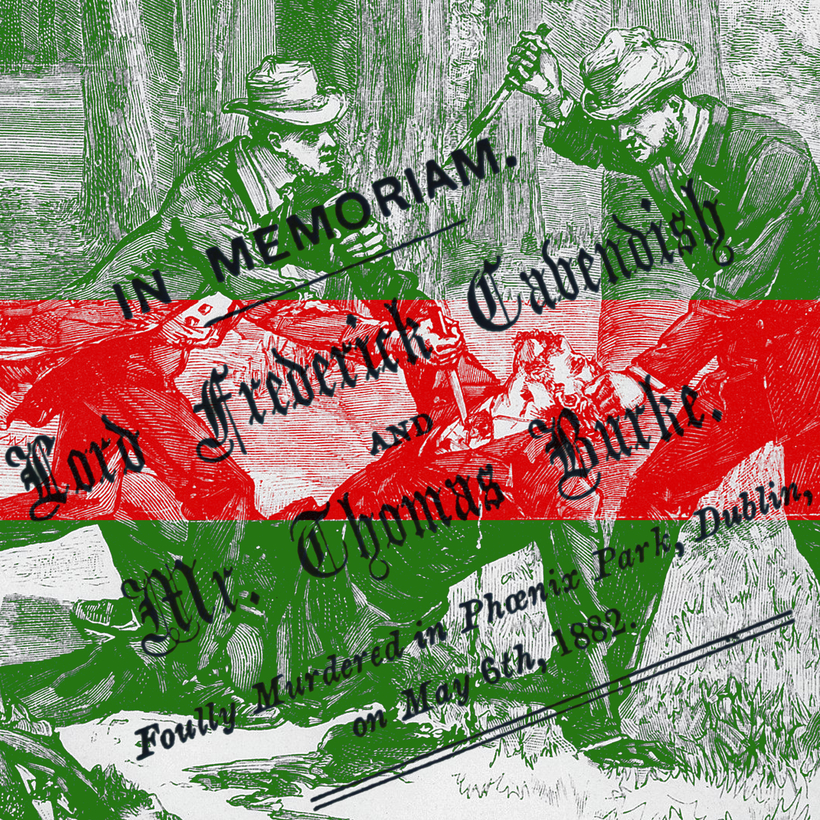The murders in the Phoenix Park in May 1882 of two of the British administration’s most powerful officials in Ireland has sometimes been treated almost as a footnote to the sweep of events that ultimately led to the settlement of 1921 and the emergence of two new states on this island.
But the assassination of chief secretary Lord Frederick Cavendish and undersecretary Thomas Burke literally changed the course of Irish history, destroying the prospect of an amicable settlement between Ireland and England and fatally undermining the constitutional processes that might have delivered Home Rule before the death of Charles Stewart Parnell in 1891.
The two officials were cut down on Chesterfield Avenue by members of a little-known extremist group, the Invincibles, armed with surgical knives.
Their target was Burke, a 52-year-old career civil servant from a landowning family in County Galway. Portrayed as an enthusiast for coercion, he nonetheless supported Home Rule and land reform. Cavendish, who was probably unknown to the assassination party, might have been unharmed had he not bravely attempted to defend Burke.
A Gentle Aristocrat, an Un-Gentle End
The possibilities of Ireland achieving self-determination, social advancement and economic progress had never been greater. Parnell’s Irish Parliamentary Party was at the zenith of its power. Some form of Home Rule was being accepted as an unwelcome inevitability by many at Westminster. The Land War was drawing to a close and reforms that would mark the beginning of the end of the landlord system were in hand.
In a few minutes of bloody work, the Invincibles undid it all. Moderate opinion in England dissipated. Any appetite for concessions to Ireland was lost. Queen Victoria herself was enraged, blind to any sense of why her Irish subjects might harbor such grievances against her government and its representatives.
The murders and the subsequent executions became a rallying point for extremist and violent sentiment. And the influence of Parnell, who alone could have held the middle ground, would shortly start to wane.
Queen Victoria was blind to any sense of why her Irish subjects might harbor grievances.
Cavendish had arrived in Ireland just hours earlier, tasked by Gladstone’s Liberal government with achieving reconciliation. The aim of the “gentle aristocrat” was to undo the bitterness and hatred engendered by repression, famine, exploitation and official indifference to Ireland’s plight.
The author Julie Kavanagh has stepped away from the more familiar ground in this skillful, multifaceted historical narrative. The discovery of notes compiled by her South African journalist father, Christopher Kavanagh, stimulated her interest in this period, in the murders, in the political and social context, and in the subsequent fate of those touched by the events of May 1882 in Dublin.
She draws in the strands of the story with extraordinary dexterity. She portrays the poverty and the brutality inflicted upon the starving, disease-ridden communities of rural Ireland. She describes in the most touching terms the devastation among the families of both the murdered and those men caught up in the conspiracy who paid for it with their lives.
Kavanagh explains who the Invincibles were and why they acted as they did. She portrays men who considered themselves as having a patriotic duty to strike back at their country’s enemies.
This narrative is valuable for its exposition of the unbridgeable gulf in understanding and perspective between Ireland and England in those times. The Invincibles arguably represented in microcosm the forces that determined Ireland’s ultimate decision to break with England and to go its own way.
Conor Brady is an Irish journalist and novelist and a former editor of The Irish Times

